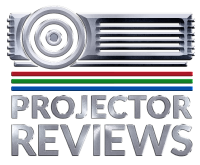- Mitsubishi HC7800D Home Theater Projector Review
- Mitsubishi HC7800DW Special Features
- Mitsubishi HC7800DW Special Features 2
- Mitsubishi HC7800D Projector Highlights
- HC7800D Projector - 3D Performance
- Mitsubishi HC7800D Projector - Physical Tour
- HC7800D Menus
- Mitsubishi HC7800D Projector - Image Quality
- Mitsubishi HC7800D Black Levels & Shadow Detail
- Mitsubishi HC7800D Projector: Performance, HDTV and Sports
- Mitsubishi HC7800D Projector - Performance
- HC7800D Color Temp over IRE Range - Post calibration: User Mode
- Mitsubishi HC7800D Sharpness
- Mitsubishi HC7800D Projector Calibration and Settings
- HC7800D User Mode AV1, Post Calibration
- Mitsubishi HC7800D Projector Screen Recommendations
- Mitsubishi HC7800D - Competitors
- Mitsubishi HC7800D Projector - Warranty
- Mitsubishi HC7800D - Review Summary
- Mitsubishi HC7800D Projector: Pros
- HC7800 Projector - Brightness for 2D viewing
- Mitsubishi HC7800D Projector Specifications
- Home
- All Reviews
- By Category
- By Manufacturer
- Best Projectors for 2024
- Best 4K Projectors for 2023
- Best Laser TVs For 2023
- Best Short Throw Projectors For 2023
- Best Gaming Projectors For 2024
- Best Home Theater Projectors For 2024
- Best Bright Budget-Friendly Outdoor Projectors
- Best Battery Powered Outdoor Projectors
- Best Outdoor Projection Screens
- Best Projectors for 2024
- Industry News
- Reports
- Projector Manufacturers
- Manufacturer Terminology
- Manufacturers
- Recent Articles
- Custom Integration
- Projection Terms
- Projector Manufacturers Categories
- Videos
- Blog
Close
Menu
- All Reviews
- By Category
- By Manufacturer
- Best Projectors for 2024
- Best 4K Projectors for 2024
- Best Short Throw Projectors For 2024
- Best Projectors Under $1,000 For 2024
- Best Projectors Under $500 For 2024
- Best Laser TVs For 2024
- Best Gaming Projectors For 2024
- Best Home Theater Projectors For 2024
- Best Bright Budget-Friendly Outdoor Projectors
- Best Battery Powered Outdoor Projectors
- Best Outdoor Projection Screens
- Best Outdoor Projectors For 2024
- Best Projectors On Amazon In 2024
- Best Portable Projectors For 2024
- Best Projectors for 2024
- Latest News
- Reports & Guides
- Manufacturers
- Articles
- Custom Integration
- Projection Terms
close

